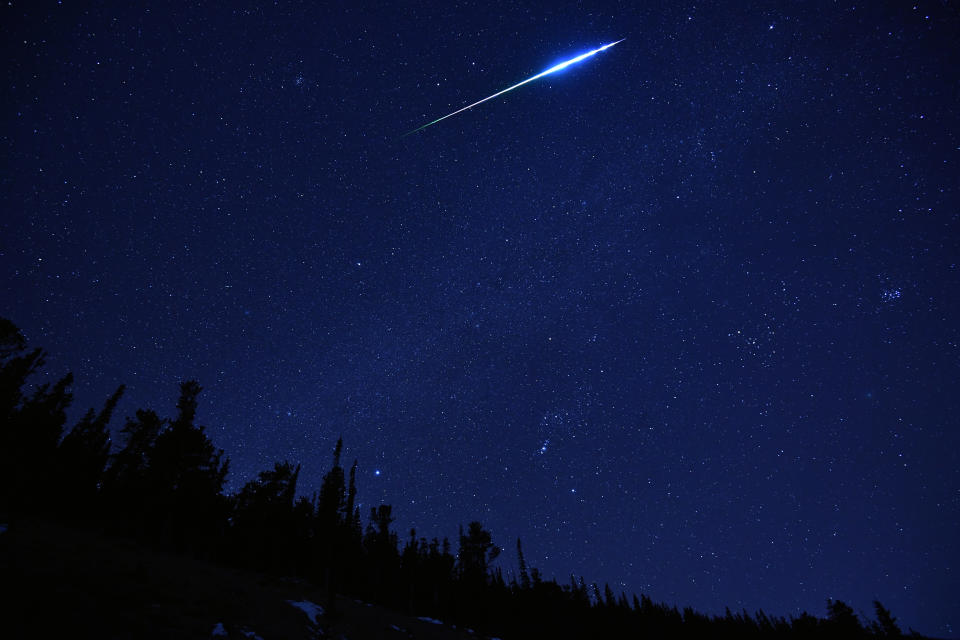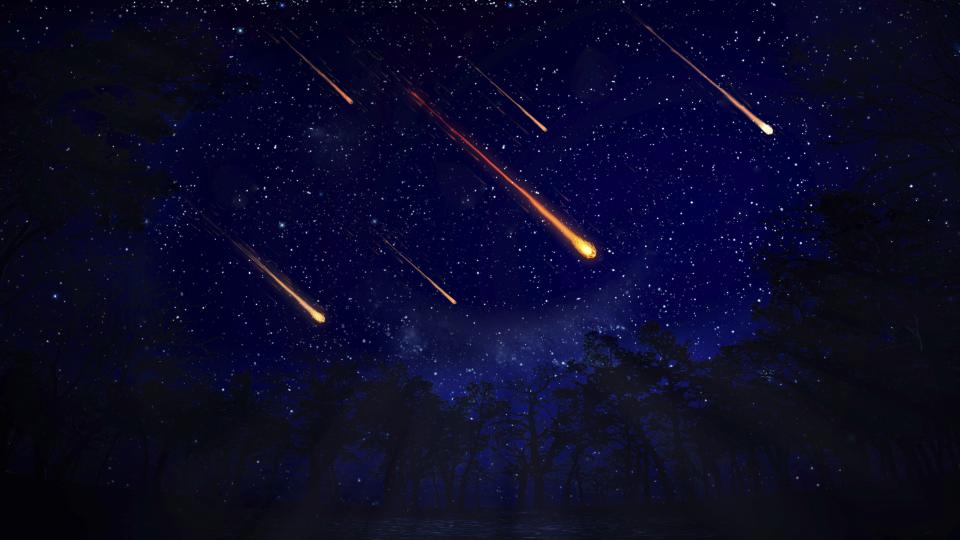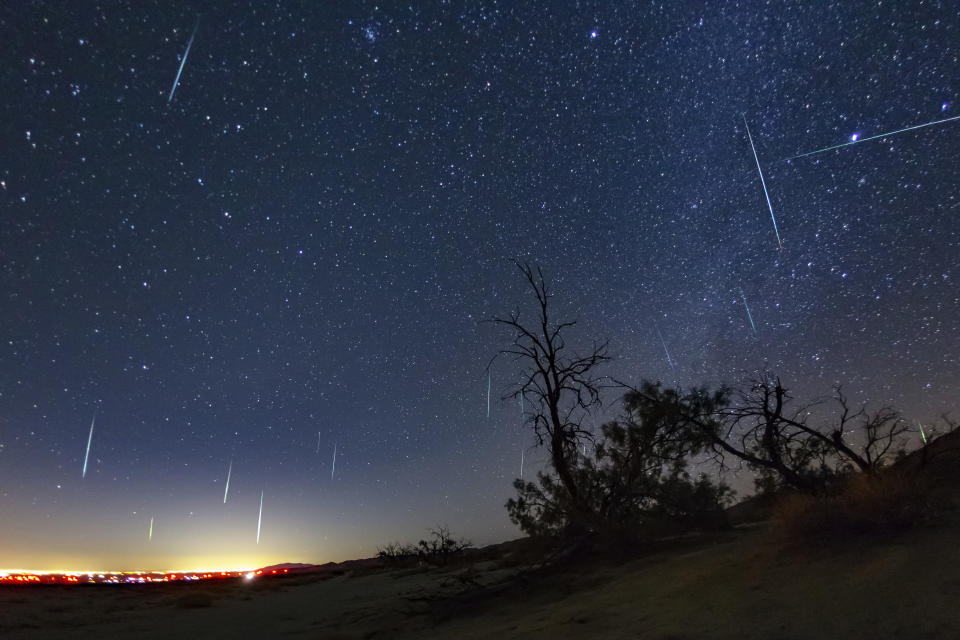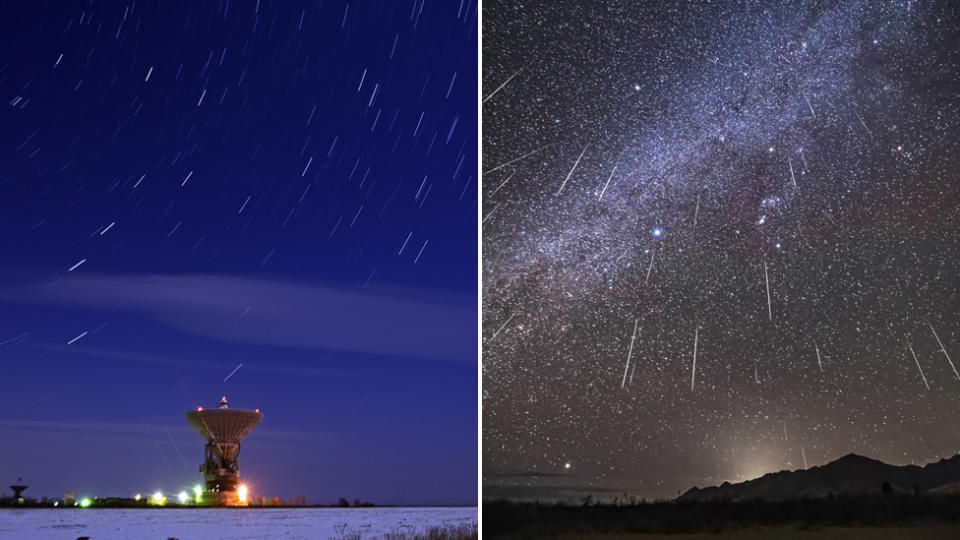When and where to watch 'the king of meteor showers'
Stargazers can expect one of the “most spectacular meteor showers of the year” next week and the good news is you won’t need a telescope to witness it.
The Geminids Meteor Shower is expected to peak on the 14th and 15th of December and there is a chance people may be able to see between 20 to 40 meteors per hour, depending on your timezone, according to astrophysicist Dr Tayyaba Zafar.
The display which is dubbed ‘king of meteor showers’ will be visible in both the northern and southern hemisphere.
The meteor shower runs from December 4 to 17, however it will be best visible, or at its peak on the 14th and 15th of December in Australia.
While the meteors will be visible throughout the night, there will be peak periods each time zone, generally in the late hours of the night, and the early hours of the morning.

What are The Geminids?
Dr Zafar, an astrophysicist from Macquarie University explained usually meteors are produced from comets, however, the meteors which will be visible on the 14th and 15th of December are from an asteroid - 3200 Phaethon.
The Geminids meteors were first observed in 1862.
Every 1.4 years, 3200 Phaethon passes Earth, in its elongated orbit around the sun, but every year, Earth passes through the debris from the asteroid, which can be observed this year in December.
Dr Zafar told Yahoo News Australia this shower is different due to the high number of meteors which will be visible.
She explains the meteors also move “relatively slowly” at 20 to 30 kilometres per second and the meteors are “multicoloured”.

“Usually you see yellow, this [Geminids shower] can produce green or blue meteors,” Dr Zafar said, adding the reason why the Geminids meteor shower received the nickname ‘king of showers’ is due to the number of meteors which will be visible.
How do I see the shower?
While you don’t need any sort of equipment, there are a few things you need to see the Geminids.
The first being a clear night sky, patience is also recommended, and timeanddate.com suggests having their Interactive Meteor Shower Sky Map on hand.
Dr Zafar also says it’s best to look in the general north direction when looking up at the sky to view the shower, as the meteors are part of the Gemini constellation which is in the north.
She also suggests getting away from the lights of the city and says your best chance would be getting near a national park to view the meteors.
“You need to be in the dark, away from the city light” Dr Zafar said.
“Any national park will do, you don’t need to go deep into the woods.”

What time to watch the meteor showers
The meteors will be best viewed across Australia from Saturday 14 to Sunday 15, however it will differ from location to location when the best time to see the meteors will be.
Dr Zafar says the best time to see the meteors in Sydney, Melbourne and Canberra will be around 5.40 am (local time) on the Sunday, however, she says anytime from midnight on the 15th onwards will provide a spectacular display.
In Perth, the best time to get settled and gaze at the sky will be at 2.40am on the 15th, Darwin and Brisbane will also experience the best of the meteors on the Sunday - Darwin at 4.10 am and Brisbane at 4.40 am.
Dr Zafar also suggests allowing time for your eyes to adjust to the darkness.
“You need to let your eyes adapt to the darkness, which normally takes 20 to 30 minutes, she said.
“Plan with that in mind.”
Visibility during peak period
Unfortunately, during the peak period there will be reduced visibility due to ‘bad weather’ for Sydneysiders hoping to view the radiant.
On the night of the 14th and the early morning of the 15th, timeanddate.com warns of “increasing cloudiness” in Sydney, while Canberra can expect broken clouds and a few thunderstorms.

During the peak, Melbourne is expected to be partly cloudy whereas Brisbane and Adelaide are expected to have clear skies.
Perth can also expect scattered cloud during the peak, according to timeanddate.com, however the website does not warn this will impact visibility.
Like Sydney, Hobart can expect reduced visibility due to bad weather and on the 14th, while Darwin is forecast to be only partly cloudy.
The moon’s proximity to the radiant may also impact visibility during the peak period.
Do you have a story tip? Email: newsroomau@yahoonews.com.
You can also follow us on Facebook, Instagram and Twitter and download the Yahoo News app from the App Store or Google Play.




